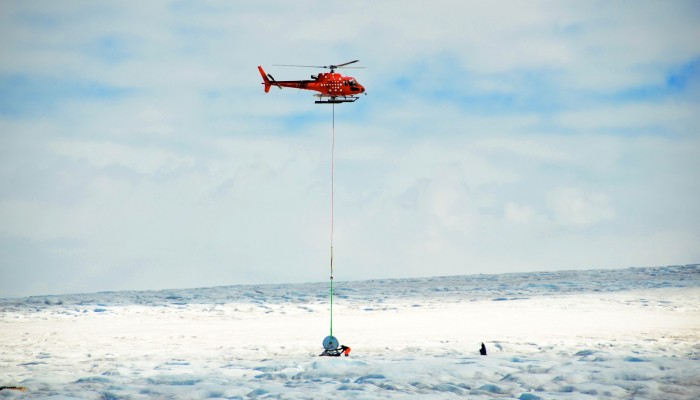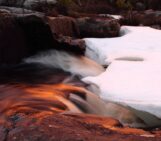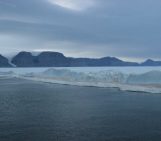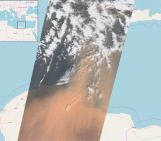
How do you get a hot water drill onto an ice sheet? The Subglacial Access and Fast Ice Research Experiment (SAFIRE) uses a hot water drill to directly access and observe the physical and geothermal properties where the ice meets rock or sediment at the glacier-bed interface. Here, SAFIRE principal investigator Bryn Hubbard and post-doc Sam Doyle help fly in the drill spool at the start of the Summer 2014 field campaign on Store Glacier, Western Greenland. Three boreholes were successfully drilled and instrumented with thermistors, tilt sensors through the ice column, and subglacial water pressure, electrical conductivity, and turbidity sensors at the ice-bed interface. Further work will be carried out in Summer 2016, when more instruments will be installed at the study site, and more helicopter slinging will be needed.




